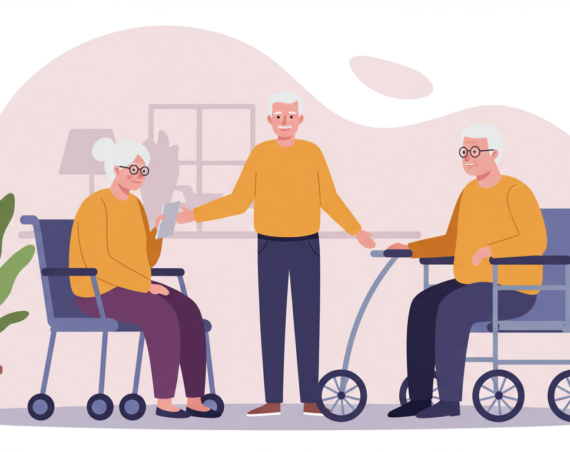
The health of a community relies on a plethora of social, economic, and political factors. Governments must ensure access to quality healthcare for all citizens and communities. However, free healthcare remains an inaccessible luxury, even in most wealthy and developed nations. Public health officials and researchers encounter numerous challenges while extending healthcare benefits and services to the masses.
Various social and economic factors come into play while determining an individual’s and a community’s access to healthcare services. These factors include education, income and wealth, employment opportunities, household compositions, racial and ethnic challenges, and social mobility.
Keep reading to take a closer look at the social factors that impact and influence public health initiatives.
Education Opportunities & Literacy Rates
Literacy rates and educational opportunities are the most influential social determinants of public health. Essentially, our education builds awareness, encouraging us to embrace healthy practices and prioritize wellbeing. It empowers us with the knowledge and tools to make decisions that increase our lifespan and allow good health.
Educated people are likely to embrace healthy activities, identify symptoms and seek treatments to facilitate an early diagnosis. In contrast, lack of education contributes to a lack of financial stability, awareness, and knowledge. Illiteracy also encourages communities to believe in religious superstitions and dogmas that discourage them from trusting and benefiting from medical science.
The impact of education is a prominent discourse in public health research and academic courses. Suppose you’re fascinated by the effects of education in building awareness around vaccines, medications, and medical treatments. In that case, you can pursue a specialization in public health to explore problem-solving initiatives with research-driven endeavors.
Aspiring professionals can pursue online MPH programs to carve out specializations and enjoy lucrative career development opportunities. The online learning landscape is thriving with a supportive infrastructure that allows convenience, affordability, and flexibility. Public health professionals can prioritize higher education and explore leadership positions to advance their careers.
E-learning allows them to escape the burdens of traditional classrooms and learn at their own pace. Besides, public health is a domain that demands continual learning to stay abreast with healthcare innovations and industry trends.
Income & Wealth
Financial stability has a profound income on an individual’s access to healthcare services and their ability to look after themselves. High-paying jobs and income security contribute to physical and mental wellness and longer lifespans. You see, high-income families live in posh and safe neighborhoods, with access to modern-day amenities and luxuries. They enjoy a healthy and secure supply of food, alongside access to fitness centers, spas, and wellness facilities.
In contrast, low-income families struggling with poverty live in slums and unsafe neighborhoods riddled with diseases and soaring crime rates. They struggle with situations that contribute to diseases and infections, such as hazardous housing, insecure food supply, and psychological illnesses. More alarmingly, these low-income families are at a higher risk of struggling with substance abuse, organized crime, and other challenges.
High-income individuals have access to quality healthcare and health insurance. They can afford treatments and medications, while low-income individuals rely solely on public healthcare facilities.
Housing & Neighborhoods
Our housing and residential neighborhoods are also powerful determinants of our health and wellbeing. They contribute to the environmental hazards that expose us to deadly diseases and viruses. For instance, neighborhoods near chemical plants are exposed to water pollution, which gives rise to digestive ailments and cancers.
Slums, shantytowns, and unhygienic developments expose communities to numerous diseases and infections. Even old constructions that contain asbestos and lead expose us to respiratory illnesses and cancers. In contrast, a neighborhood free of drug peddlers, criminals and decked with modern advancements allows good health.
Safe and healthy neighborhoods with organized and well-planned residential developments contribute to superior life quality. They support physical and mental wellbeing by providing their residents with security, stability, and comforts.
Racial & Ethnic Challenges
We live in a culturally diverse and globalized world, with ethnic and racially diverse populations. Communities that are not native to a country or landscape often find themselves marginalized and at a disadvantage. They struggle to enjoy equal access to education, employment, and healthcare resources. Governments often overlook them, and politicians do not consider them an integral element of their electoral victories.
Their challenges are far more aggravated and diversely complex than low-income communities native to a country. The challenges stem from a lack of education, which translates into a lack of employment opportunities and financial security. They end up populating slums on the outskirts of cities, living in unhygienic conditions that contribute to diseases.
Conclusion
Can you consult a physician to examine a lump on your chest as soon as you notice it emerging? Or do you need to wait around for your monthly paycheck before making the appointment?
Our ability and ease of accessing healthcare is a significant determinant of our health and wellbeing. Health insurance makes it easier for us to engage medical professionals, undergo screenings, and start treatment. Our education, income, and employment status define our healthcare accessibility. People who are disadvantaged by the unequal distribution of opportunities and wealth struggle with healthcare accessibility.




